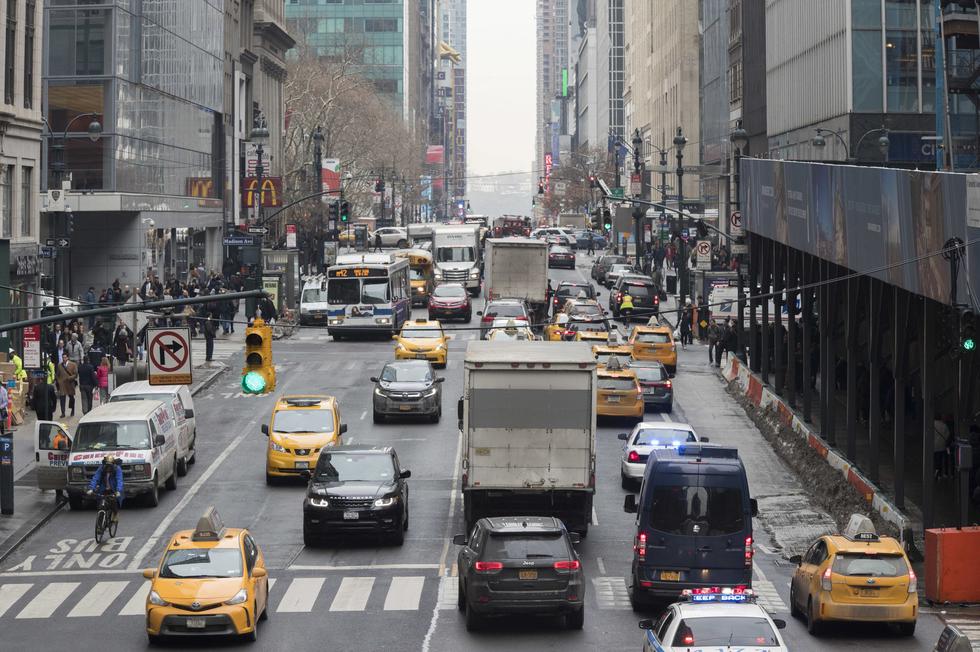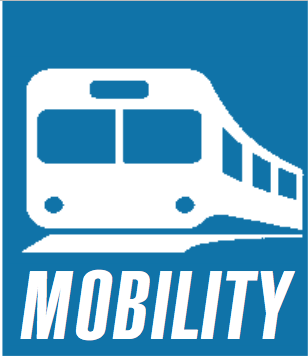

Once upon a time in the city of New York, the subway was the only way to go. There was no contest between fast, reliable, no-frills trains or the gridlock upstairs. For sheer cultural immersion, nothing is more New York than the subway. Couples marry there, women give birth, kids can learn the alphabet. Besides, where else would a pizza-carrying rat catapult into internet stardom?
But upstate in Albany, a parade of governors and state lawmakers couldn’t care less about the public transportation problems of a few million little people. Still worse, they had no compunction about siphoning off big bucks from the city’s Metropolitan Transportation Authority for more important Empire State concerns like ski resorts. The resulting underground decline has turned New York transit into a travesty, a first-order-of-magnitude hassle of constant delays and breakdowns.
Those who can do have other options. Enter Uber.
Since the ride-hailing company and Lyft, its major its competitor, came on the scene, more people have a fighting chance to get where they need to go. The ride-hailing companies (also known as “transportation network companies” or TNCs) even straddle the color line. If your skin is black or brown, hailing a yellow cab is often a passageway into deepest angst—and ride-hailing can be a solution.
But what do TNCs mean for the third-most congested city on the planet? As gratifying as it can be to give bad transit and yellow cabs a New York salute by using ride-hailing services, an epidemic of finger-pointing has broken out over the TNCs’ role in traffic congestion. While some transportation researchers attribute the city’s congestion woes to the ride-hailing services (and a growing a preference for TNCs over buses and subways), others point to factors such as increased construction and tourism. Many area transportation researchers support congestion pricing as a long-overdue fix that would compel drivers and the for-hire industry to drive less or pay up.
But congestion pricing requires political courage—something that suburban and outer-borough state lawmakers failed to demonstrate earlier this year in Albany, since many voters don’t support the policy.
So on Wednesday, the New York City Council plans to vote on a proposal to “study and decide whether to adopt vehicle utilization standards or regulations on the number of for-hire vehicle licenses,” (wheelchair accessible vehicles would get an exemption) effectively capping the number of licenses issued during a one-year period for the TNCs. (Yellow cabs are already capped at 13,587 vehicles.)
If the motion passes, New York would become the first American city to limit the number of ride-hailing vehicles. The bill’s supporters (which include taxi and TNC drivers) also say that the measure would give relief to beleaguered cabbies who have seen the value of the medallions required to operate their taxis plunge, leaving them heavily indebted. (Corporate parents Uber and Lyft, not surprisingly, oppose the plan.)
But the TNCs also have a key group of allies: such civil rights groups as the NAACP and the Urban League, and local leaders like the Reverend Al Sharpton. Since the TNCs convey people of color to Harlem, Brooklyn, the Bronx, and beyond, where many yellow cabbies fear to tread (or won’t go since they’re unlikely to get a fare back to Manhattan), it’s easy to see why.
They’re talking about putting a cap on Uber, do you know how difficult it is for black people to get a yellow cab in New York City? This isn’t about UBER it’s about US-AH! We need to stand up for US! #saturdayactionrally pic.twitter.com/lOgRjjLu6a
— Reverend Al Sharpton (@TheRevAl) July 28, 2018
Countless black men and women have endured the indignity of trying to hail one of New York’s ubiquitous yellow cabs only to have it speed right by. Two years ago, during a business trip to New York with a white colleague, I tried to hail a cab several times to go to a lunch hour meeting. Finally, I asked my co-worker to take over and one zoomed right up. Though white-on-black bigotry of New York cabbies is legendary, many cabbies are new immigrants (often themselves people of color) who quickly absorb American society’s race-based pecking order: Only 8 percent of city cab drivers are American-born. (Taxi discrimination is not unique to New York. I’ve had cabs pass me by or refuse to take me in Boston, Washington, and my native Philadelphia, with my elderly mother leaning on my arm.)
Yet in their rush to support ride-hailing services, civil rights leaders should recognize that these companies are themselves not always paragons of racial virtue. Last year, an African American woman traveling from Manhattan to Flatbush in Brooklyn (a $40 ride) had an Uber driver zip off after she approached his vehicle. A 2016 study by MIT, Stanford, and University of Washington researchers of Uber, Lyft, and racial and gender discrimination in Seattle and Boston found that African American passengers waited longer for their rides (in Seattle) and had more drivers cancel trips if the passenger had an “African American sounding name” (in Boston).
As Tom Slee, author of What’s Yours is Mine: Against the Sharing Economy, told The Guardian, bigotry manifests itself in two distinct ways: “One is when individuals choose which exchanges to take part in … will an Uber driver pick up this passenger? The second is after the exchange, when people rate each other: Our prejudices play out in the ratings we give.”
There is another Faustian bargain inherent in failing to tackle increased traffic congestion that’s taken a back seat in the current debate: air pollution, which has a disproportionately pernicious effect on people of color. Although the 2018 New York City Community Air Survey showed that the city has the cleanest air since monitoring began a decade ago, the study also noted that “High levels of fine particulate matter, nitrogen dioxide, and nitric oxide continue to be observed in areas of high traffic density, building density, and industrial areas. These pollutants have been linked to adverse health outcomes, including an exacerbation of cardiovascular and respiratory disease.”
The incidence of hospitalizations and mortality for asthma, respiratory disease, heart disease, and stroke for African Americans is considerably higher, in most cases, than for any other socio-demographic group in New York City. Black children also have the highest rate of asthma in the city.
No matter how the New York City Council votes, TNCs would be less of an issue for municipal lawmakers and civil rights leaders if state lawmakers in New York (and officials in other congested metro areas, including Atlanta, Dallas, Miami, and Washington) recognized the transportation crisis staring them in their collective faces and allocated the necessary dollars to overhaul rapid transit systems.
A new regulatory plan that addresses the issues facing all New York for-hire services is also long overdue, as is a viable mechanism to address discrimination complaints against yellow cabs and TNCs. State lawmakers in Albany may not want to go there, but absent serious sums of real money, the solution to gridlock and air pollution points to congestion pricing and getting back to basics—like providing New Yorkers and visitors with first-class mass transit.



